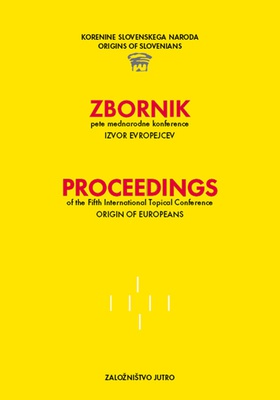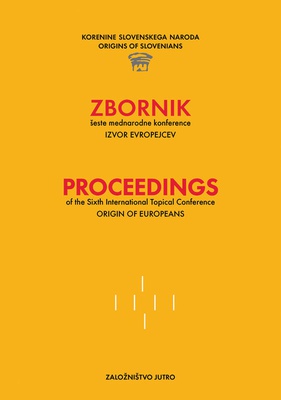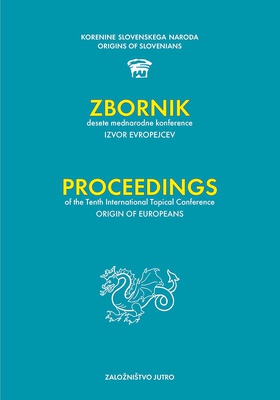SKUPINE KNJIG
(XII.) ZBORNIK KONFERENCE IZVOR SLOVENCEV (2013)
- Velikost:
- 16,5 x 23,5 cm
- Tisk:
- enobarvni
- Število strani:
- 288
- Vezava:
- broširano
- ISBN:
- 9789616746779
- Prodajna koda:
- 8052
- Cena:
- 25,00 €
- Akcijska cena:
- 15,00 €
Zbornik enajste mednarodne konference Korenine slovenskega naroda IZVOR EVROPEJCEV prinaša najnovejše ugotovitve domačih in mednarodnih strokovnjakov in znanstvenikov o staroselstvu na Slovenskem in v Evropi. Raziskave gredo v smeri povezav jezikoslovja in genetike, ki kažejo, da sta stara slovenščina in venetščina na isti veji kot toharščina. Nosilci Ria skupine, med katere spadajo tudi Toharci, so se selili pred 4000 leti iz srednje Evrope na vzhod čez Karpate do vzhodne Azije. To pa pomeni, da smo Slovenci staroselci v Evropi 4000 in več let.
O podobnosti s staro slovenščino pričajo napisi na Kreti iz 2. tisočletja pred n. št., etruščanski, umbrijski in samnitski napisi. Grška poimenovanja staroselcev v Podonavju iz prve polovice 1. tisočletja se berejo kot Sloveni in Slaveni. To pa pomeni, da so makedonski in panonski staroselci govorili stari slovenski jezik in naseljevali pokrajini Sklavinija in Slauonia. Pojem Sloveni je naveden v Vramčevi Kroniki (1578) prvič že za leto 2175 pred n. št., drugič pa sega v obdobje Aleksandra Makedonskega v 4. stol. pred n. št.
Zgodovina, da smo staroselci na današnjem slovenskem in širšem ozemlju, ki je bila splošno uveljavljena vse do začetka 20. stoletja, je bila potem pozabljena, zamolčana in prikrita. V delih, ki so izšla v zadnjih tridesetih letih, je zbranih dovolj novih dejstev, zato je zdaj čas, da se za mladi rod napiše na novo zgodovina Slovencev kot enega najstarejših narodov v Evropi.
The proceedings of the Eleventh International Conference Roots of Slovenes- ORIGIN OF EUROPEANS brings to light the latest findings of Slovene as well as international experts and scientists about the ancient population in Slovenia and elsewhere in Europe. The research is focused on the relationship between the linguistics and genetics, which shows that Slovene and Venetian are of the same origin as tocharian language. The holders of R1A group, which includes Tocharians, migrated four thousand years ago from the middle Europe to the east across the Carpathian range all the way to Eastern Asia. This proofs that Slovenes have been natives in Europe for 4000 and more years.
The similarity between modern and old Slovene is shown by inscriptions in Crete that go as far as the second millennium B.C. and Etruscan, Umbrian and Samnite inscriptions as well. The Greek names of the indigenous community in the Danubian region mention both Slovenes and Slovenes, which means that the natives of Macedonia and Pannonia spoke an old Slovene language and were inhabitants the countries of Sclavinia and Slauonia. In the Chronicle of Anton Vramec (1578) is the term Slovenes stated first for the year 2175 BC and next to the fourth century BC in the period of Alexander of Macedonia.
The historical records that considered Slovenes as indigenous population within the borders of our country and beyond had prevailed up to the beginning of the 20th century, have become afterwards much forgotten, withheld and rather concealed. The works that have been published in the last thirty years have gathered a lot of new historical facts, which makes it crucial for the new generation to come up with an updated version of the history that should present Slovenes as one of the oldest nations in Europe.




